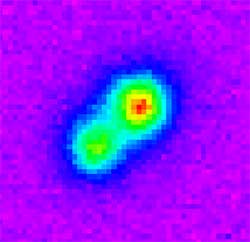Michal Levinstein, Israel Astronomical Society

Direct link to this page: https://www.hayadan.org.il/nanas090805.html
After decades of searching, astronomers discovered the first brown dwarf only 10 years ago. Now, a new analysis of data from the Hubble Space Telescope suggests that our galaxy has almost as many brown dwarfs as normal stars (like our Sun).
The Sun and other stars produce energy by turning hydrogen into helium. Unlike them - brown dwarfs have such a low mass - less than 8% of that of our Sun - that they are not hot enough to support such a nuclear process. Instead, they convert gravitational energy to heat, glowing red and fading as they cool.
Russell Ryan, Jr., Nimish Hathi, Seth Cohen, and Rogier Windhorst (Russell Ryan, Jr., Nimish Hathi, Seth Cohen, and Rogier Windhorst) from the University of Arizona in the US used data from the Hubble Space Telescope to search for brown dwarfs in 15 directions different above and below the plane of our galaxy (Milky Way). Using infrared data, the astronomers discovered 28 pale and red stars like stars of the cold spectral type - type L or T, with brightness between 21-25.
The candidates to be brown dwarfs belong to the narrow disk, the brightest component of the galaxy, which includes our sun and most of the other nearby stars. The thickness of the narrow disk is 2,000 light years. The brown dwarfs are in a disk 2,280 + 330 light years thick.
Extrapolating (estimating, calculating) the number of discovered brown dwarfs, astronomers estimate that the number of L and T type stars in our galaxy reaches 100 billion. This number is equal to the number of all the stars in the galaxy of the different types combined.
Thus, a number of brown dwarfs may sneak up unseen at a distance of 12 light years from the Sun. This volume of space contains more than two dozen main sequence stars like our Sun. Only two of them are known to be brown dwarfs, orbiting an orange dwarf named Epsilon Indi (ε) Indi 11.8 light years from Earth. They are the closest known brown dwarfs to our Sun.
Despite their impressive numbers, brown dwarfs add very little weight to the galaxy and are not counted among its dark matter. The team of researchers estimate that they add barely 1 billion solar masses to the galaxy - only 0.1% of the total galaxy mass. Together, the galaxy has 1 trillion solar masses - most of it dark matter.
For information on Astronomy.com
Ydan Astrophysics 2 - stars
https://www.hayadan.org.il/BuildaGate4/general2/data_card.php?Cat=~~~261122421~~~97&SiteName=hayadan
